If water were an option in rock/paper/scissors, there would be no game. Water wins. Always. Given time, water will eat a mountain and eat it with such gentle caress and subtle gnawing that the mountain never knows it’s doomed. Jack Kerouac had it beautifully backwards when he said: “It was the work of the quiet mountains, this torrent at my feet.” Sorry, Jack. There is a dance between mineral and water, but water always leads.
Despite its power, water is surprisingly fragile in its role as facilitator of life. Organic life, as we know it, does not happen without water, and entire ecosystems with their own unique forms of life flourish around each interpretation of water. The character of water — fresh and cold, warm and salty, hot and brackish, and a million combinations in between — ultimately decides what and how many species and individuals can live within each kingdom.
All of these ecosystems are balanced on intricate measure. Throw one little kink in the mix, mess with the water just a bit, and the whole damn thing can fall apart. It’s not destroyed but wiped clean. Imagine Einstein’s chalkboard after years of his wrestling with the theory of relativity. Now imagine a new-hire janitor doing his job on that board with an eraser. The chalkboard is fine but Einstein must start over. While some components will likely remain, the path is forever changed.
Perhaps that’s not a good analogy because watery environs, unlike the laws of physics, change. As creatures with, on average, four-score lifespans, we typically fail to perceive the subtle changes, those measured on a geologic time scale. We don’t notice as rock wears away and continents drift and the moon stretches its gravity tether to Earth. We notice the dramatic, the sudden. And those of us with an intimate relationship to water notice the changes first, we notice the potential for striking change just as it creeps above the horizon.
Of course, the biggest catalyst of change creeping — or perhaps roaring — upon us is climate change, and it should be obvious to all of us by now. Dramatic change is happening and those delicate systems that many of us cherish are suffering. I see it here, in the southern Ozark Mountains, though it’s not so jarring as what my cold-water compadres witness in the trout streams and deep woods lakes farther north.
Still, climate change remains mostly an abstract idea for many folks. Blame it in on the political battlefield and cognitive dissonance or blame it on head-in-the-sand crisis management, many fail to see the real effects of climate change. Other threats to our water register as unnoticeable to most of the population, too. The question for those of us that do notice has become how to help others make the leap from abstract to tangible, how to help them to see the problems, and it’s quite a challenge.
About 70 miles north of my home, the Buffalo River continues to cut its channel through limestone and dolomite in the Ozark Mountains. The Buffalo is our nation’s first national river and it teems with smallmouth bass, channel catfish, longnose gar and myriad other lesser known creek critters. It is a jewel nestled in what I consider Arkansas’s crown of natural beauty found in the Ozarks. The Ozarks may look like hardwood ridges and shadowy hollows, but the hills are defined by crystalline creeks and rivulets. With riffles clear as moonshine and deep turquoise pools, the Buffalo is the standard for Ozark water with its own distinct flavor seasoned by the topography that was shaped by the water to begin with.

The Buffalo came to be our first national river only after it was threatened by damming. The promise of an economic boom almost killed the river, and it would likely have wound up much as the river it feeds into and the second largest river in Arkansas: the White. Now known as a world class trout stream (if you like your trout factory fresh) the White River is collared by dams eight times from it’s headwaters in northwest Arkansas to its confluence with the Mississippi. Dramatic changes followed the damming — pretty much total ecosystem collapse for miles downstream due to frigid lake bottom water release from the dams — which is where those factory trout come in. But the Buffalo was spared because voices of those who loved it in its wild glory spoke up. The canoeists, naturalists and anglers poured their passion and knowledge into its protection, and passion and knowledge ate away at the idea of damming the river. The Buffalo was named a national river in 1972, a title that meant federal protection.
Or so we thought.
The latest threat to the Buffalo is a 6,500 head confined hog farm sitting mere yards from one of its largest tributaries. That’s right. There are gallons — literally thousands of gallons — of liquid pig shit sitting just a few hundred yards from a major tributary of the Buffalo National River and still this registers in the abstract for so many folks. Pig crap sitting in a lagoon and spread on the fields and filtered through the water soluble karst topography that makes the region known for caves and spring water and guarantees that anything in the water and on the pastures will end up in the creek and yet, some folks say they can’t see the problem.
If we can’t get people to see pig crap as a problem how are we ever going to get them to see greenhouse gases? It’s a question with no easy answers, but I think we can take a cue from the river and the work of river lovers from decades ago. Whether it’s pig manure or damming or mining waste or too much CO2, the problems are growing and time is of the essence. But knowledge and passion can wear the problems down. Truth is like water — it’s an indomitable force that can shape even the political landscape; it’s a river that can eat mountains of denial with such gentle caress and subtle gnawing that the mountain never knows it’s doomed.
Our job is to strengthen flow and channel energy to where it’s most effective. The best way to save the waters we love is to be water.




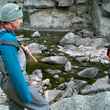
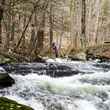











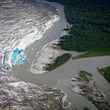



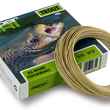
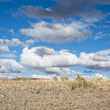







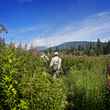
Comments
Jim Taylor replied on Permalink
Beautiful writing with an inspiring message. Shared it! JIM
Evergreen replied on Permalink
Great post! I think too many people have been lulled into complacency about the peril our waters still face. Just because a river is no longer a fetid stink-canal or doesn't burst into flames anymore, it is still under threat.
Jim Sawhill replied on Permalink
Carbon Dioxide emissions from the oceans and from industry are greening the planet, not polluting it (we achieved clean air and water in the ‘70s and ‘80s):
http://www.csiro.au/en/News/News-releases/2013/Deserts-greening-from-ris...
These plants can economize on water and nitrogen and are, of course, our and all animals supply of oxygen.
We are growing more food on less land than ever before in history:
https://www.nass.usda.gov/Newsroom/2016/08_12_2016.php
The social benefit of carbon is free plant fertilizer for the entire globe. I have never eaten sweeter mangoes than are now grown in the Sahel in Nigeria, a desert in transition.
Certainly we should care for clean water and clean habitats, but it is wrong to allow progressive propaganda and environmental extremists to claim that the science is in. We're warming (very slightly) from emerging from the Little Ice Age in an interglacial climate. That warming causes the oceans to release CO2. Our industrialization has produced civilization and the most beneficial environment by almost all measures (life expectancy i.e.) that humans have known.
The hog farm is a man-made threat to the water.
Pages